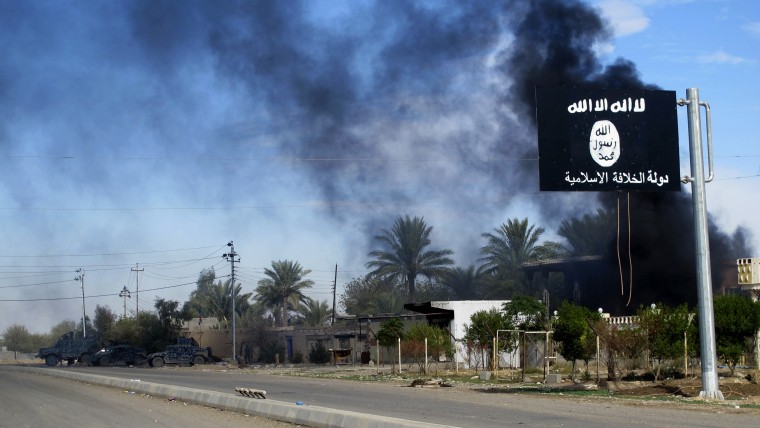One year ago this week, President Obama
launched a military offensive against ISIS targets in the Middle East, and announced the U.S. role in leading a coalition against Islamic State militants. A year later, how's the mission going?
Well, that's not exactly an easy question to answer. Vox's Zack Beauchamp, arguably more than most, has
emphasized key evidence of progress, most notably the fact that ISIS "has lost almost 10 percent of its territory so far in 2015." The Obama administration's special envoy, retired Gen. John Allen, delivered public remarks two weeks ago, arguing that "ISIS is losing" in Iraq and Syria.
On the other hand, the Associated Press
reported Friday that U.S. intelligence agencies have apparently reached a very difficult conclusion, at least at this point in the campaign.
...U.S. intelligence agencies see the overall situation as a strategic stalemate: The Islamic State remains a well-funded extremist army able to replenish its ranks with foreign jihadis as quickly as the U.S. can eliminate them. Meanwhile, the group has expanded to other countries, including Libya, Egypt's Sinai Peninsula and Afghanistan. [...] "We've seen no meaningful degradation in their numbers," a defense official said, citing intelligence estimates that put the group's total strength at between 20,000 and 30,000, the same estimate as last August, when the airstrikes began.
Of particular interest, however, is the part of the mission in which U.S. officials train moderate Syrian forces to combat ISIS on the ground -- because if the reported "stalemate" isn't discouraging enough, this related aspect is much worse.
A Pentagon program to train moderate Syrian insurgents to fight the Islamic State has been vexed by problems of recruitment, screening, dismissals and desertions that have left only a tiny band of fighters ready to do battle. Those fighters -- 54 in all -- suffered perhaps their most embarrassing setback yet on Thursday. One of their leaders, a Syrian Army defector who recruited them, was abducted in Syria near the Turkish border, along with his deputy who commands the trainees.
Just so we're clear, we're not talking about 54 brigades or battalions; we're talking about literally 54
specific individuals. And as of last week, this group of 54 lost some of its top leaders to abductions.
The Times piece noted that Defense Secretary Ashton Carter believes the total will increase in time, and the shortfalls are the result of "strict screening standards, which have created a backlog of 7,000 recruits waiting to be vetted."
That sounds like a fairly reasonable explanation -- I'm all for a real vetting process -- but if we're counting on a group of fighters totaling 54 people (and falling), there's going to be a limited amount of success.
One can only wonder what more it might take for the Republican-led Congress to take even a passing interest in the conflict.
